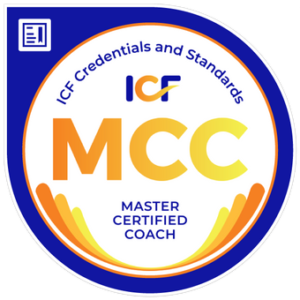
Developers seek potential in everyone, no matter what the situation. They believe that people are born with limitless possibilities. Learn how Dr. Maria Montessori created an educational model that not only serves children yet also gives individual school owners the opportunity to monetize their strengths.
When a Developer® helps others, they feel genuinely fulfilled. I often recommend to the Developers that they make a list of people whom they have impacted. Such a list will inspire a Developer by forcing them to recognize how they have empowered others and made a difference in their lives. Next, I ask them to make a list of people they want to mentor, thus continuing to hone this strength in the future. Developers can also benefit from identifying the mentors and teachers that have invested into their lives and showing gratitude to these individuals.
At the same time, Developers run the risk of investing too much time and energy in lost causes. In some cases, there are individuals that simply will not sprout wings and fly, no matter how long a Developer works with them. An earthworm will never be a caterpillar, much less a butterfly, but Developers can’t always see this because they are so focused on the possibility. One of the things a Developer can learn is how to mentor in the moment. Mentorship needn’t last a lifetime. Developers can still make a lasting impact in the moment without over-committing.
Developers are great additions to any team because they are so adept at recognizing the progress, achievements, and growth of other team members. People with the Developer strength help keep morale high. But Developers must take care not to focus so intently on others that they ignore their own progress. The Developer’s own personal development is crucial if they are to continue helping others flourish and succeed.
Maria Montessori, an Italian physician, and educator was best known for the philosophy of education that bears her name. At an early age, Montessori enrolled in classes at an all-boys technical school, with hopes of becoming an engineer. In enrolling in this school, she broke gender barriers and expectations of her day. She soon had a change of heart and began medical school. Her father did not approve of his daughter’s desire to be educated much less to become a doctor. Women didn’t do such things in the 19th century. Though many obstacles stood in her way, Maria earned her degree from the University of Rome in 1896. Her specialty was pediatric medicine.
While Dr. Montessori got her opportunity to put her experience, observations, and theories into practice in Rome in 1907, she was invited to open a school for the children of working-class families in a low-income housing project. Her first school was a traditional school called Casa dei Bambini.
Dr. Montessori observed the children becoming deeply involved in their work and their play. She began organizing their day and their classroom environment to encourage self-discipline and responsibility. Her idea was to “follow the child.” The classroom space, materials, desks, even the flow of the day all had to flow from this central tenet of Montessori. Teachers were to be guides, not stern taskmasters. Dr. Montessori’s approach was quite different from what was commonly found in elementary classrooms of the day. Yet her first Casa dei Bambini was successful, and her methods gained the attention and approval of other educators and civic leaders. Her second school opened later in 1907.
Dr. Montessori dove into what I believe was her Developer strength by implementing her idea of “follow the child”. She observed the children’s deep involvement in their work and their play. To empower the children in their learning, she began organizing their day and their classroom environment to encourage self-discipline and responsibility. The classroom space, the materials, the desks, the flow of the day all had to come from this central principle of Montessori. She also viewed teachers differently. They were to be guides for the children, not stern taskmasters. Her approach was different from what was found in elementary classrooms of the day. Even with this significant difference from what was the norm of the day, her methods were shown to be successful, they gained the attention and approval of other educators and civic leaders.
Today there are over 8,000 Montessori schools in the U.S. Though Dr. Montessori’s work began in the inner city with children from low-income families, her Montessori schools have become very popular in middle-class America. Search on Private School Review for Montessori schools within, say, a 10-mile radius of a zip code in most urban areas, and you will be rewarded with dozens of Montessori schools to choose from.
Each Montessori school is individually owned and operated. Not only has Dr. Montessori impacted the lives of children in the schools but also the lives of the people who own the schools. Montessori school owners can learn to be better business owners and entrepreneurs while making a profit. What a delight knowing that you are investing in the development of the world’s future leaders and at the same time making a living that is sustainable, profitable, and full of purpose.
Who would you like to develop and mentor? How could you empower others while becoming a more savvy business owner with better revenue and profitability? Let me know in the comments below. Want to talk with me about how you could monetize your strengths or other business building questions you have? Please schedule you free Ask Brent Anything call, and let’s talk strengths.





